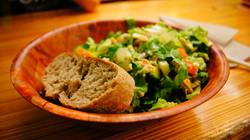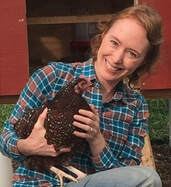
A recent article in the Journal announced that it is possible to get fatter without eating more, and conversely, that it is also possible to lose weight without eating less. (And no, this is not factoring in exercise.)
This flies in the face of approximately 100 years of mainstream advice on obesity and weight gain, which has only considered amount of calories consumed versus calories burned. In truth, like most things about health, the reality is much more complex than that!
In fact, weight gain (and loss) has a lot more to do with the type of calories consumed, and their effect on blood sugar, than you may have guessed. So how does this work? Let me explain....
The article refers to a study in which animals were fed high-glycemic foods, and just like you and I would, they developed an impaired insulin response (pre-diabetes). The researchers then reduced the amount of food they were feeding the animals, but instead of losing weight, the animals actually gained weight. In fact, they ended up gaining 70% MORE fat than the control group which was fed low-glycemic foods! (Source: JAMA. 2014;(311)21: 2167-2168.)
Hmmm....does this remind anyone of someone you know who may have gone on a diet and actually gained weight instead of losing it? On diets where you eat fewer calories, but continue to eat high-glycemic foods, you may actually end up gaining fat, despite eating less. Many calorie-restricted diets can have this effect. The result is, you end up having less energy, feeling crappy, and being hungry all the time - all the while losing very little weight, or even putting a bit more on. It's no wonder we hate dieting!
So what is the answer?
It's actually fairly simple: According to this article, if you want to lose weight, simply eat foods that don't spike your blood sugar.
You're probably familiar with the Glycemic Index (GI), but to get the maximum fat-burning potential from your meals, you will actually want to go a bit beyond this and calculate the Glycemic Load (GL). To do this, just multiply a food's glycemic index number by the total amount of carbohydrates in each serving. (Don't worry if you're bad at math - there's a link to a handy chart below.)
Glycemic Load is more practical for daily life than just looking at the Glycemic Index for foods, as some foods with a high GI - such as sweet potatoes - actually have a low GL. In short, the GL is shorthand for how fattening a food really is, which makes it a really useful tool to have in your arsenal of health information!
Dr. Al Sears has put together a handy chart showing the GI and GL of a number of common foods.
Click Here for the Printable Chart....
How to Use the Chart:
1. Green Light: Eat as much food as you like with a GL under 10.
2. Yellow Light: Eat foods with a GL between 10 and 20 sparingly.
3. Red Light: Avoid foods with a GL over 20 as much as possible. These foods spike insulin quickly, and make your body store fat.
Again, weight gain and weight loss are complex issues that depend on many factors within your body, and they can vary from one individual to another. However, keeping an eye on the Glycemic Load of the foods you eat - especially if you're trying to lose weight, or have chronically high blood sugar - can be a very healthy step to take.
To your health,
Rose.



 RSS Feed
RSS Feed